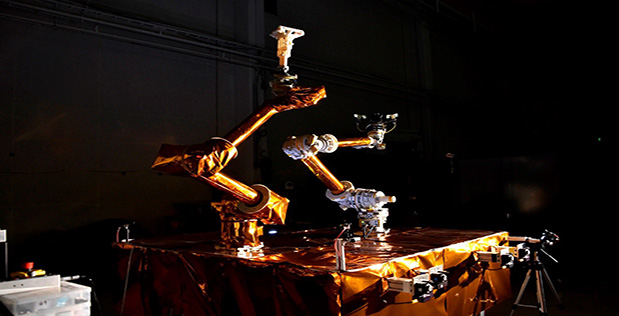
The Defense Advanced Research Projects Agency’s (DARPA) review of its Robotic Servicing of Geosynchronous Satellites (RSGS) program showed that it is on track to fulfill its mission of servicing at least 20 commercial and government spacecraft in geosynchronous orbit (GEO).
There are significant technical challenges in servicing satellites in GEO, but success in this area could substantially revolutionize military and commercial space operations, lower satellite construction and deployment costs, and improve satellite reliability.
During the review, which took place in July, DARPA chose the U.S. Naval Research Laboratory (NRL) to build the robotic payload.
“The completion of the payload preliminary design review is a major milestone for the RSGS program,” Joe Parrish, RSGS program manager in DARPA’s Tactical Technology Office, said. “NRL was able to demonstrate that its payload design meets DARPA’s objectives and is compatible with the spacecraft bus being provided by (Space Systems Loral) SSL. We are well on our way to significantly improving the resiliency and functionality of government and commercial spacecraft in geosynchronous orbit.”
Several elements of the program have advanced beyond the preliminary design review stage. Flight versions of two dexterous robotic manipulator arms — which will allow up-close repair and installation of technical packages on satellites — are in production. They are expected to be completed in 2019. Also, the launch of the RSGS robot servicing vehicle is on target for 2021.
The RSGS program shares characteristics with the Consortium for Execution of Rendezvous and Servicing Operations (CONFERS), which DARPA sponsors, and NASA’s Restore-L mission, which aims to provide certain servicing options for satellites in low-Earth orbit.
Team members across all three of these programs will share insights and lessons learned.




